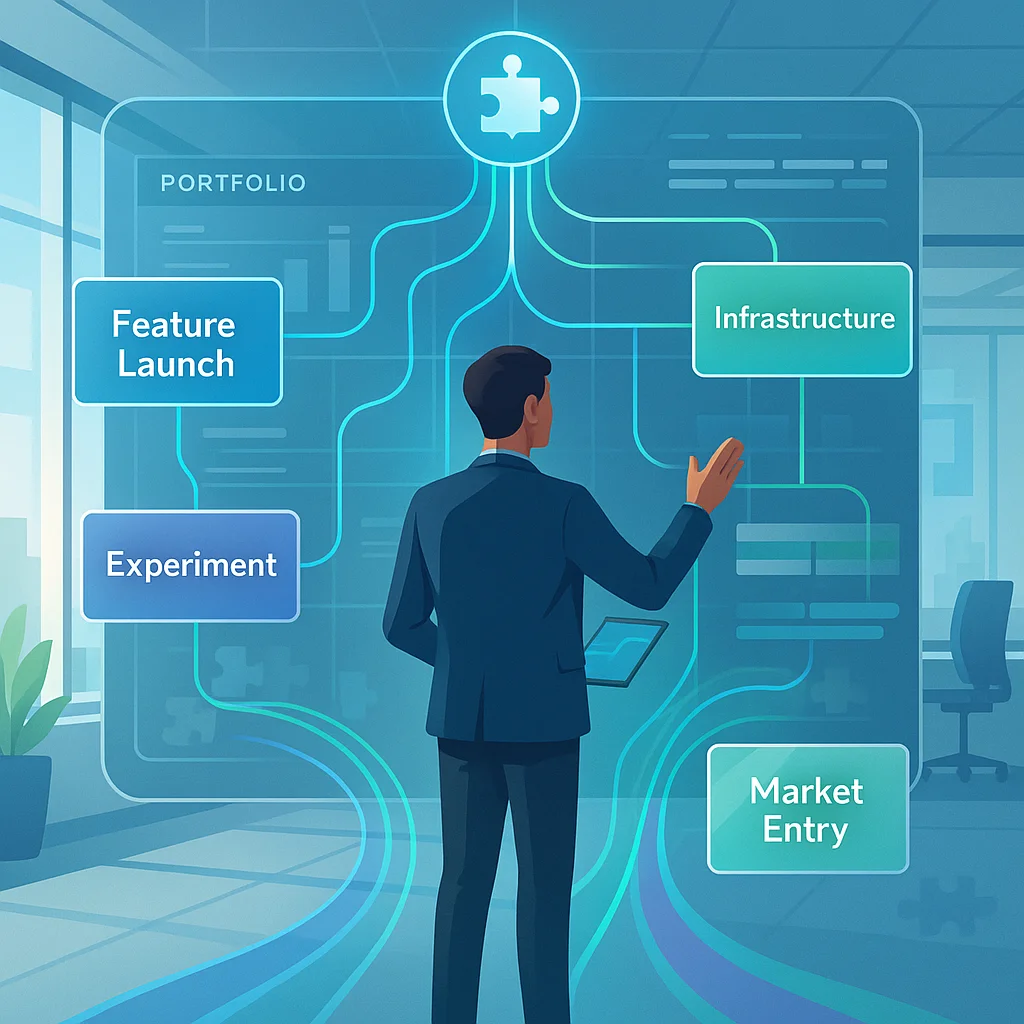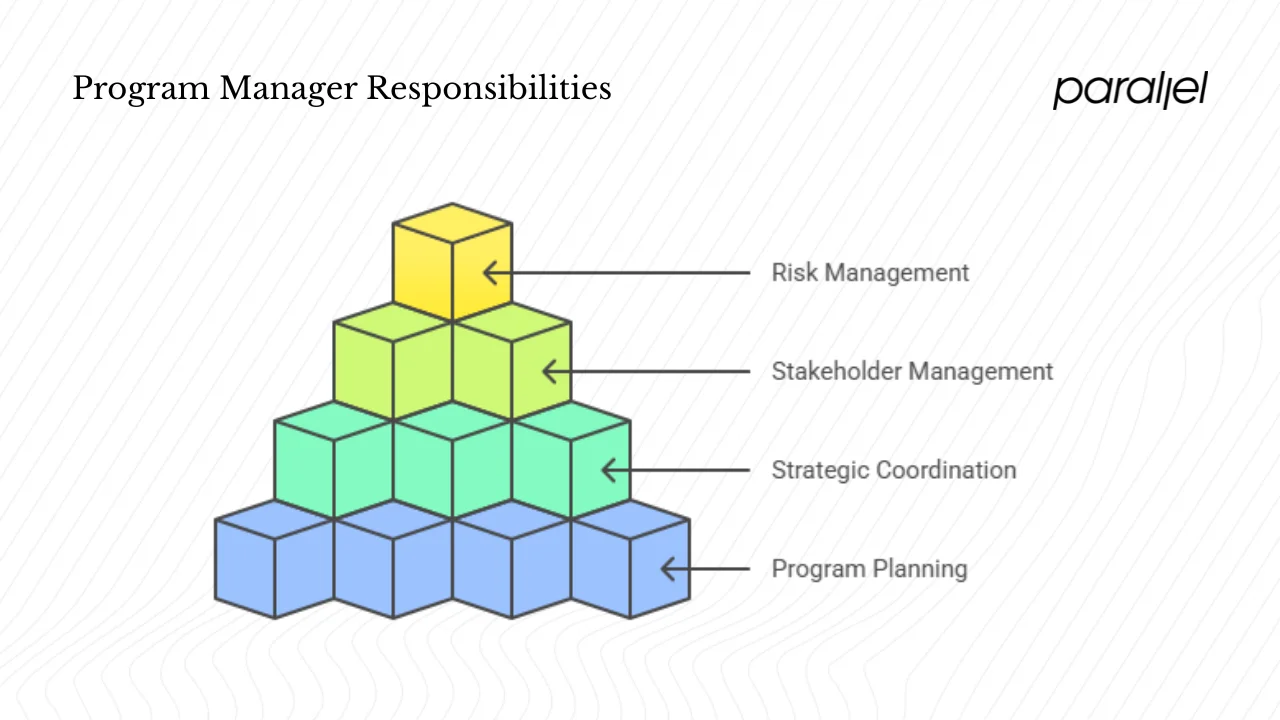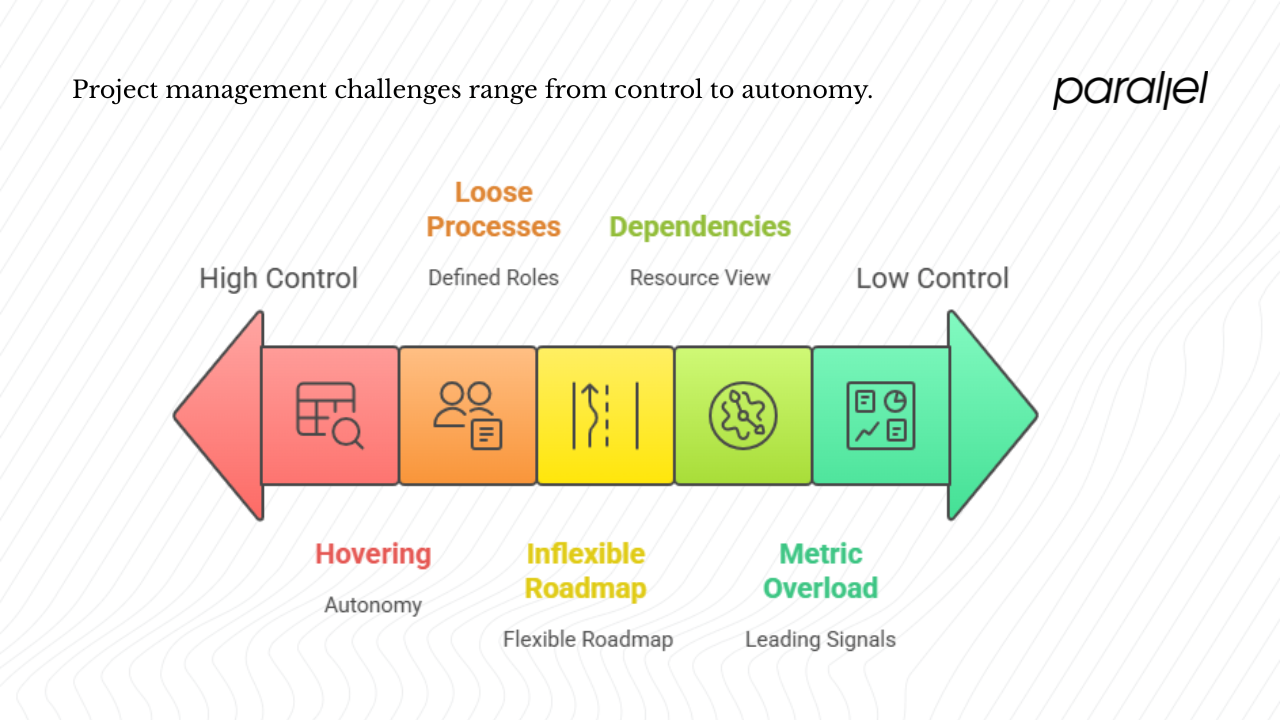What Is a Program Manager? Guide (2026)
Learn what a program manager does, including overseeing multiple projects, aligning initiatives, and delivering strategic outcomes.

Running a young company can feel like juggling while sprinting: you’re shipping new features, refining onboarding and testing marketing campaigns all at once. Without someone to connect the dots, priorities slip and efforts scatter. People often ask, what is a program manager and why would a lean team need one? This piece explains what program managers do in product‑driven young companies, how the role differs from project or product management and which skills matter, so founders and design leaders can decide whether this discipline could help them scale smarter.
What Is a Program Manager?
A program is a group of interrelated projects organised around a strategic objective. Each project—launching a feature, migrating infrastructure, running an experiment—delivers a piece of the puzzle. Together they work toward a larger business goal such as entering a new market or improving retention. To answer what is a program manager we start here: they are the person who looks at these initiatives together and helps the organisation view them as parts of a single effort rather than siloed tasks.

ProductPlan describes a program manager as a strategic project‑management professional whose job is to oversee and coordinate multiple projects, products and other initiatives across an organisation. They maintain a portfolio view, reconcile interdependencies and provide broad guidance to project managers. The U.S. Department of Energy offers a more official description: a program manager is an official charged with implementing and administering a specific program. In practice this means they are accountable for matching projects with strategic objectives, allocating resources and ensuring that the program delivers business outcomes.
In big companies there may be a formal program management office. In young companies the need for strategic coordination is just as real but the role may be ad hoc or combined with product or project management duties. Regardless of title, someone must keep the big picture in view and help the team work toward it.
Why the role matters in young companies
Early‑stage companies often run lean. One designer might double as a product manager, while an engineer might own infrastructure and security. When multiple initiatives run concurrently—build the app, improve onboarding, run a marketing pilot—someone must ensure these efforts reinforce the overall direction. In this context, what is a program manager? They are a force multiplier who links work to business objectives and keeps everyone moving in the same direction.
Programs exist to realise strategy. The program manager works with founders and heads of product to translate strategic goals into coordinated plans. Monday.com emphasises that program management focuses on delivering measurable business outcomes and benefits that match organisational strategy. For a young company, this means making sure that launching a feature, migrating a database and hiring a marketing coordinator all contribute to a strategic objective—such as improving activation rates or expanding to a new segment.
Because program managers span design, engineering, marketing and support, they enable cross‑functional collaboration. Research shows that bringing together different functional backgrounds enhances problem‑solving and efficiency. The program manager makes this collaboration possible by surfacing dependencies and scheduling conversations at the right time.
Young companies also operate with limited budgets and people. Without oversight, teams might overcommit or miss critical dependencies. A program manager allocates resources across projects, monitors budgets and identifies risks that span multiple initiatives. When marketing and product teams depend on the same developer to integrate an analytics tool, the program manager ensures priorities are clear and timelines match. This proactive coordination reduces wasted effort and ensures that every hour spent moves the company toward its goals.
Core responsibilities
A program manager’s day involves planning, coordination and problem‑solving. While specifics vary by organisation, core responsibilities typically fall into four areas:
- Program planning and resource allocation: Set program scope, success criteria and timelines. Work with project managers to translate strategic goals into actionable plans and decide how to divide budgets, staff and tools across projects.
- Strategic coordination: Ensure every project matches business objectives. Take a broad view across the entire program and guide project managers so they all work effectively toward the program’s purpose. Coordinate dependencies across product, marketing, support and infrastructure and adjust plans as strategy changes.
- Stakeholder management and communication: Brief executives on program status, facilitate decision‑making and handle escalations. Make sure teams understand how their tasks connect to overall goals. Asana’s guide emphasises that program managers often have more seniority than project managers and rely on influence rather than authority.
- Monitoring, risk management and value delivery: Review dashboards, compare actuals to targets and identify cross‑project risks such as resource conflicts or technology gaps. Work with project owners to mitigate issues and ensure that outputs translate into business benefits.

Differences from related roles
Program manager vs project manager
Program manager vs product manager
Essential skills and competencies
The Project Management Institute’s 2025 report highlights that professionals with high business acumen achieve better outcomes—higher rates of business goals met, schedules kept and budgets respected—yet only 18 % of project professionals demonstrate high business acumen. A strong program manager fills this gap. Critical skills include:
- Strategic thinking: Translate strategic goals into coordinated plans and make trade‑offs that maximise return on investment.
- Leadership and communication: Build trust with designers, engineers, marketers and executives without formal authority. Listen well, negotiate and adapt messages to each audience.
- Resource and financial management: Balance short‑term project needs against long‑term program goals. Handle vendor contracts and track spending.
- Risk and dependency management: Identify dependencies and risks early, maintain risk registers and know when to raise an issue. Build contingencies into timelines and budgets.
- Program planning and performance tracking: Design roadmaps, set milestones, define metrics and build dashboards. Use data to tell a story: what’s on track, what’s at risk and how the program contributes to business goals.
Familiarity with design, user research, technology and marketing builds credibility but isn’t a substitute for the strategic and coordination skills above.
A typical day
A day in program management is built around constant oversight and communication:
- Morning: Review the program dashboard. Check metrics such as activation rates, feature usage, spend and resource availability. Identify slippage or spikes and draft a concise status update for leadership.
- Midday and afternoon: Host cross‑functional check‑ins with project managers and meet stakeholders to discuss progress toward strategic objectives. Evaluate workload forecasts, adjust assignments or budgets, review vendor contracts and address escalations such as an important engineer being ill or a vendor missing a deliverable.
- End of day: Write a brief update for leadership focusing on progress against business objectives and outlining risks and decisions needed.
This routine is far from rigid. You might also jump into product discussions, help scope the next sprint or field investor questions. The throughline is flexibility and a constant focus on the bigger picture.
When should a young company hire a program manager?
So, what is a program manager in terms of timing? You need one when parallel initiatives and cross‑functional dependencies overwhelm the founding team, when teams fight over the same people or budget or when complexity makes it hard to see how projects add up. In very early stages the founder or product lead may cover this work, but as coordination costs rise it’s worth hiring someone dedicated to program management.
How to become (or transition into) a program manager
Many program managers start as project managers. They learn to run a project end to end, then expand to coordinate multiple projects. Others come from product, engineering or operations, bringing domain expertise and learning program management on the job.
To move into program management, seek opportunities to run complex or multi‑team projects. Volunteer to lead an initiative that spans several functions. Learn to track interdependencies, communicate across teams and present progress to leadership. If you’re in product or design and curious about what is a program manager as a next step, showcase your ability to coordinate across functions and deliver business outcomes. Demonstrate how your work drove strategic impact, not just feature delivery.
When hiring, founders should look for candidates who have coordinated multiple projects, influenced stakeholders without direct authority and delivered measurable business results. Ask for examples of how they managed risks, adjusted plans as strategy shifted and ensured that project outputs translated into outcomes.
Common challenges and how to handle them

1) Balancing scope without hovering
- Set clear expectations with each project lead.
- Ask for brief, regular check-ins instead of constant updates.
- Define which decisions you handle and which ones stay with the project team.
- Keep short reference notes so you can switch context without digging into every detail.
2) Working through unclear roles and loose processes
- Draft a simple program charter that explains who does what.
- Share it with everyone involved and adjust it together.
- When uncertainty pops up, point back to the charter and fill the gaps as a group.
- Treat the charter as a living guide rather than a fixed rulebook.
3) Handling shifting strategies
- Maintain a flexible roadmap that shows priorities, assumptions, and current bets.
- Revisit it whenever leadership changes direction.
- Flag tradeoffs early so decisions don’t drag on.
- Keep short updates flowing to stakeholders so no one is caught off guard.
4) Managing dependencies and tight resources
- Build a single view of shared resources across projects.
- Spot bottlenecks early and raise them before deadlines slip.
- Encourage teams to speak up when they see cross-project friction.
- Re-plan in small steps instead of waiting for big resets.
5) Avoiding metric overload
- Pick a handful of leading signals tied to real outcomes such as activation, retention, or revenue.
- Keep reporting simple and easy to scan.
- Review metrics on a regular cycle and drop anything that no longer helps you make decisions.
- Check that each number has a clear owner and a clear use.
Conclusion
Program management brings clarity and unity to organisations juggling multiple initiatives. Throughout this article we’ve unpacked what is a program manager, reviewed official definitions and practical contexts, explained why the role matters for young companies and product‑led teams, outlined core responsibilities and skills, compared it with project and product management and discussed when to hire or become one. The program manager’s value lies in connecting strategic intent with execution—allocating resources, matching projects to objectives and ensuring that outputs translate into outcomes. When you finish reading, pause and ask yourself, what is a program manager in the context of your organisation.
For founders and product leaders, if your projects aren’t adding up to the growth you envision, consider adding program management expertise through a new hire or by empowering an existing leader. Programs serve as the bridge between vision and delivery and having someone tend that bridge can turn disconnected tasks into a cohesive push toward your goals.
FAQ
Q1. What is the role of a program manager?
A program manager oversees multiple related projects, ensuring they collectively deliver on strategic business objectives. They coordinate across projects, allocate resources, manage risks, connect work to business goals, work with stakeholders and track performance.
Q2. Is a program manager a high‑position?
The role usually sits above project managers because of its broader scope, but hierarchy varies by company size and stage. In small young companies, the same person may handle project and program management.
Q3. What are the top three skills of a program manager?
The three critical skills are strategic thinking and business acumen, stakeholder management and communication and resource allocation and risk management.
Q4. What is a program manager versus a project manager?
A project manager delivers a single initiative, while a program manager oversees a set of related projects, matches them to business strategy and ensures that they deliver cumulative benefits.









.avif)



